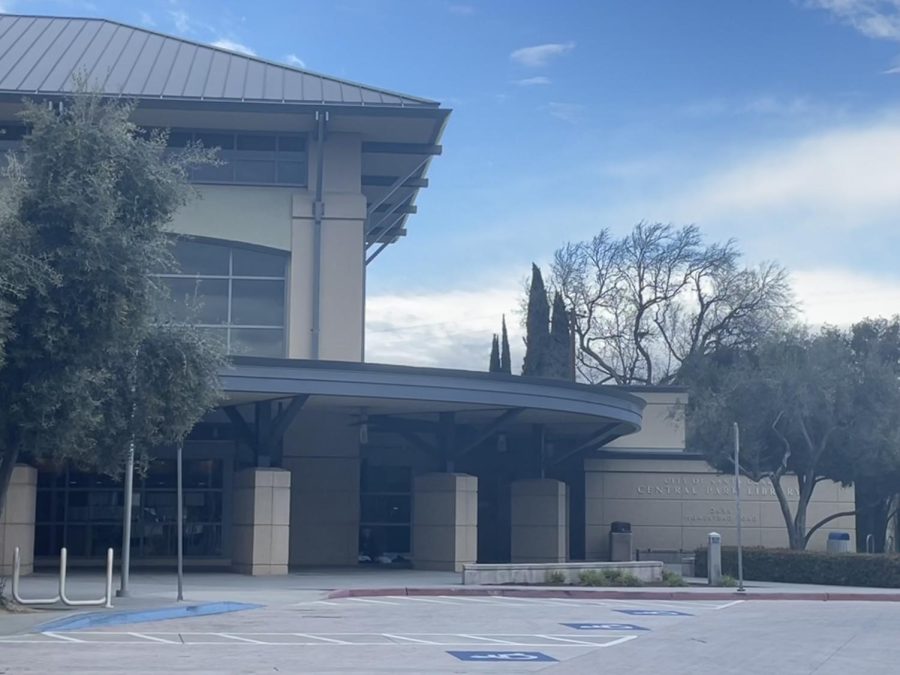California is known for its warm, sunny weather and beautiful beaches. Yet, warming centers are popping up around the Bay Area during the winter.
Warming centers are short-term emergency shelters that open during dangerously inclement weather. They serve as a shelter for people to seek refuge from the cold weather outside.
Cities use publicly accessible locations like libraries, with pre-established heating as warming centers. Opening these shelters protects people from the dangers of staying out in dangerously cold weather, as they can face issues like frostbite or hypothermia without proper shelter.
One of the Bay Area warming centers is the Central Park Library in Santa Clara County, one of many locations indicated on the city of Santa Clara’s website. These locations are open during the day. At night, phone numbers, such as 211, assist city residents with finding alternative sites for housing, food, and crisis prevention.
Patty Wong, the city librarian for the Santa Clara Public Library, one of the locations repurposed as a warming center, expressed her gratitude for using the library for the community in a new manner.
“Something to consider is that if we’re already available as a library, and we already have resources in the building, why not use it a little differently to support a community that needs it? We already have community meeting rooms, restrooms, water fountains, and great things to read,” Wong said.
“Why not use the buildings a little differently to support a community that needs it? We already have community meeting rooms, restrooms, water fountains, and great things to read,”
— Patty Wong
Malori Redman, a lecturer and an adjunct faculty for San Francisco State University and the San Mateo community colleges, teaching a range from meteorology to climate science, shared similar sentiments to Wong.
“I know that there are many folks who are less fortunate and maybe don’t have a warm place to stay. So I think it’s a great thing for the communities and the folks that need that extra help and extra assistance,” Redman said.
Additionally, experts like Alison Bridger, a meteorology and climate science professor at San Jose State University, stress the need for everyone to have a warm place to sleep.
“People are suffering. Even in our insulated houses, we would still be very cold in the winter without any heat. I don’t want to go to work in the morning and see dead bodies on the sidewalk,” Bridger said.
However, for many residents of the Bay Area, heated housing is a struggle. As climate change leaves the future uncertain for the homeless, Redman believes that developing infrastructure could give them the extra help they need to survive the cold.
“In regards to providing resources for folks who need it, for the unhoused and the housing insecure, they need that extra help. Otherwise, they will freeze to death. When things get too cold, people can get really sick. Whether it be the flu or a head cold, or even pneumonia,” Redman said.
“It makes it hard, if you’re sick, to go to work. But many people are still trying to go to work and get back on their feet, but the cold makes it really difficult to do that.”
Coincidentally, the Bay Area has been struck with periods of lower temperatures and many rainy days due to an unfortunate weather pattern. Typically, cold spells last for a couple of days as it passes from East to West. However, according to Bridger, weather patterns are slowing down, suggesting a link to climate change.
“About last year before Christmas, we had about a two-week period where we had frost every morning. It’s not unusual to get frost, but I would say that we typically get frost maybe three nights in a row. That means the cold air settled in place over us and didn’t move away to the east, which is what normally happens. Then in January, we had the big rains, and it was as if the storms stayed focused on us without moving east like they normally do,” Bridger said.
Like Bridger, Redman has also examined the weather patterns and notes the possibility of cascading crises that could occur with prolonged rain.
“The crazy couple of weeks in late December and early January, which were caused by several atmospheric rivers back to back. When that happens, the soil gets too saturated, so when more rain falls on top of that, landslides, mudslides, and flooding can happen,” Redman said.
According to Redman, the need for warming centers will likely increase with climate change and the possibility of experiencing colder temperatures more frequently. However, climate change and extreme weather events also threaten temperature increases. Both temperature changes are detrimental to those struggling with housing as they also face risks of heatstroke, consequently bringing about the need for properly air-conditioned spaces during the summer.
“When you don’t have air conditioning, heatstroke is a very common sickness, and people die from it. We saw that happen in Seattle, Vancouver, and British Columbia. Hundreds of people died from heat-related incidences, and that’s likely to happen here as well,” Redman said.
“Hundreds of people died from heat-related incidences, and that’s likely to happen here as well,”
— Malori Redman
Because of the danger posed by the upcoming summer, individuals like Bridger believe in developing cooling centers to stave off the heat.
“But come summer, we’re more likely to have a long stretch of hot weather than before. So that’s why cooling centers would be needed just as much, if not more than, warming centers,” Bridger said.
Nevertheless, air conditioning and heating require vast energy and funding. According to Redman, rent and energy prices are skyrocketing, posing a larger challenge for people to get the temperature regulation they need. What’s more, climate change also affects agriculture which could bring even more economic struggle for Bay Area residents.
“In British Columbia and Seattle, they had intense heat waves that boiled sea creatures alive. To add on, around six months ago, 1 billion crabs disappeared. So they stopped the crabbing season in Alaska because where they would typically see billions of crabs, there were none to be found,” Redman said.
Due to the extreme temperature’s impact on agriculture and energy, prices could skyrocket as supply is lowered, thus creating a greater demand for warming and cooling centers. Because of this, Wong has begun suggesting new ways for community members to prevent the growing issue actively.
“We want to make sure that families endeavor to create emergency supply kits and that they are familiar with emergency phone numbers like 211,” Wong said.”
Redman also shared her recommendations for how people can help with climate change.
“The biggest thing we can do is reuse. For example, avoiding excessive packaging and single-use plastics. Banning single-use plastics in the grocery stores would be a big help,” Redman said.
Ultimately, warming and cooling centers go beyond providing shelter for the homeless, giving other community members a chance to relieve some of the pressure of their lives.
“There have been several people who don’t necessarily identify as people who need shelter, but they have said that they were appreciative of the opportunity to take advantage of the services offered. The residents and people who call Santa Clara home are our neighbors, and that means that we should take care of everyone,” Wong said.













